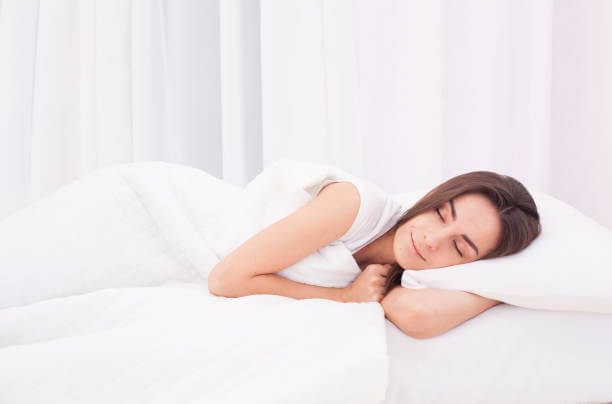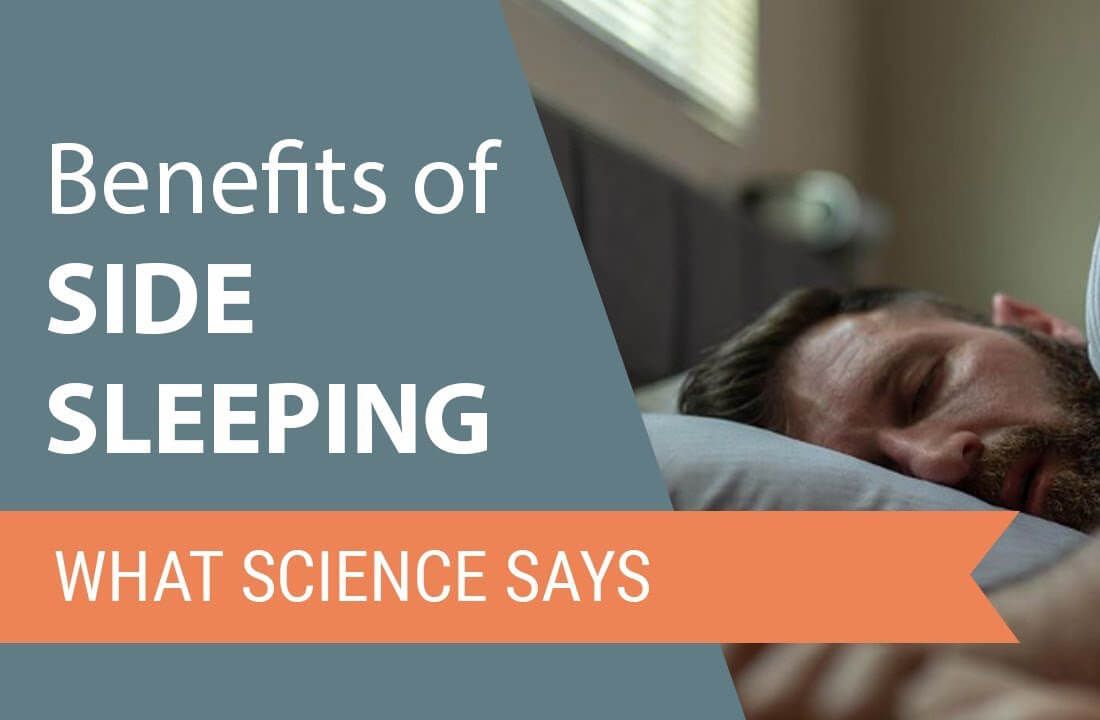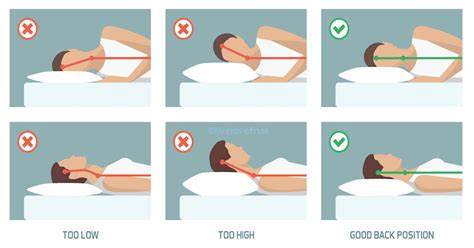What is side sleeper
A side sleeper is someone who sleeps with their body positioned mainly on one side.
This sleeping position has been used for centuries and has many advantages, including improved spinal alignment, reduced pressure points, and better breathing.
It is believed to be the healthiest sleeping position because it allows the spine to remain straight while avoiding misalignment of joints that can occur when lying flat on one’s back or stomach.
Side sleeping also reduces snoring and helps promote better circulation as well as more restful sleep, since it prevents turning and tossing throughout the night.

Side sleepers can benefit from using a firmer mattress that supports the hips and shoulders, such as a memory foam mattress.
Pillows come in handy too; side sleepers should opt for thicker pillows that are higher than their shoulder so their neck stays aligned properly with their spine.
Be sure to switch sides during the night to prevent hip pain or other discomfort from occurring due to muscle imbalances caused by always lying on the same side.
For those who often wake up with aches or pains, side sleeping is beneficial because it helps keep your spine in its natural “S” shape rather than contorting it into an unnatural position like when lying on your back or side.
Additionally, side sleeping ensures proper alignment of your head, neck and shoulders which can reduce tension headaches brought about by incorrect posture during sleep.
Side sleeping increases air flow through your nose and throat thanks to gravity pulling down on them more efficiently when you are in this position than any other type of sleep posture.
This can reduce snoring as well as alleviate symptoms of sinus congestion or allergies since allergens won’t easily collect near your nose while you slumber in this position.
Overall side sleeping has been proven to have numerous health benefits such as improved spinal alignment, increased air flow leading to reduced snoring, improved circulation due to less tossing and turning throughout the night, alleviation of sinus congestion symptoms and reduction of tension headaches caused by incorrect posture while asleep – making it arguably the ideal sleep posture for those looking for a healthier night’s rest.
Benefit of side sleeper
Benefit of side sleeping is vast, and people who side sleep can experience a improved health and well-being.

When side sleeping, the spine is able to stay in its natural “S” shape rather than contorting it into an unnatural position like when lying on your back or side.
This allows for improved spinal alignment which leads to better posture throughout the day as well as reduced pressure on key areas like the neck and shoulders while you sleep.
Additionally, side sleeping reduces snoring due to gravity pulling down on your nose and throat more efficiently when in this position than other types of sleep postures.
This also helps with symptoms of sinus congestion since allergens won’t easily collect near your nose while side sleeping.
Additionally, side sleepers may find that they have less tossing and turning throughout the night because their body is better aligned which promotes better circulation throughout the body.
Further benefits of side sleeping include
- reduced tension headaches caused by incorrect posture during sleep thanks to proper alignment of head, neck, and shoulders
- improved breathing due to gravity drawing air down through nose
- less pain from muscle imbalances due to switching sides during the night.
Overall side sleeping offers numerous physical benefits if done correctly – with greater spinal alignment, increased air flow leading to reduced snoring, improved circulation due to less tossing and turning throughout the night, alleviation of sinus congestion symptoms and reduction of tension headaches caused by incorrect posture while asleep – making it arguably one of the healthier sleep positions available.
To maximize these benefits people should opt for firmer mattresses that support their hips and shoulders such as a memory foam mattress as well as thicker pillows that are higher than their shoulder so their neck remains aligned properly with their spine.
The Bad of side sleeping
The downside of side sleeping is that it can be uncomfortable for those with chronic back and neck pain.
Side sleepers are more likely to experience pain due to the extra pressure that is put on the side of the body which is sleeping.
While side sleeping, a person’s spine will often curve into an unnatural position which causes strain on the vertebrae, leading to soreness in your back and neck.
Additionally, side sleepers may find themselves waking up on the same side each night due to their body becoming accustomed to this position which can cause further discomfort as well as muscle tension.

Another potential downside of side sleeping is that it can increase snoring for some people as gravity pulls air down through their throat causing airway obstruction.
This can have further consequences if left untreated as snoring increases the risk of obstructive sleep apnea, a serious disorder in which breathing becomes shallow or pauses during sleep throughout the night.
Finally, side sleeping can be difficult for light sleepers who find themselves waking up easily throughout the night due to an inability to get comfortable in one position for too long.
This is because side sleepers tend to remain in the same spot all night until they switch positions whereas those who lay on their backs or stomachs move around more freely without getting stuck in one place.
As such, light sleepers may find it difficult to get a good quality rest while side sleeping as they’ll struggle staying asleep and comfortable in one spot all night long.
In conclusion, side sleeping has both benefits and drawbacks when it comes to restful nights.
The positive aspects include
- improved spinal alignment
- increased air flow leading to reduced snoring
- improved circulation due to less tossing and turning throughout the night,
- alleviation of sinus congestion symptoms
- reduction of tension headaches caused by incorrect posture while asleep
however side sleeping can also
- lead to uncomfortable aches
- pains from extra pressure put on certain parts of your body
- increase snoring for some individuals which can lead to obstructive sleep apnea and make it difficult for light sleepers who are unable stay still one spot all night long.
As such it’s important for everyone considering side sleeping as their preferred posture do so with caution and ensure they are using proper mattress support and adequate pillows so that its health benefits far outweigh its potential negative impacts on their quality rest time.
The best pillow for side sleeper
The best pillow for side sleepers is one that is specifically designed to provide optimal support and comfort while they sleep.

A silicone foam pillow is a great choice as it is softer than traditional memory foam, which helps to prevent pressure points from forming in the neck and shoulders.
This type of pillow also provides superior breathability, allowing air to circulate freely throughout the night and helping to reduce snoring.
Additionally, silicone foam pillows are more resistant to dust mites and allergens, making them an ideal option for those with allergies or respiratory issues.
Silicone foam pillows also have a unique shape that contours to your body’s natural curve, providing additional support for your head and neck throughout the night.
The silicone material is also extremely lightweight, so you won’t feel like you’re sleeping on a hard surface.
Plus, silicone foam pillows are resistant to flattening over time and can be easily washed in the washing machine without losing its shape or fluffiness.
When choosing a silicone foam pillow for side sleeping, it’s important to consider both size and thickness.
For most people, a medium-sized silicone pillow should be sufficient.
However if you tend to move around during sleep or have particularly broad shoulders then a larger size may be necessary.
As far as thickness goes, if you’re looking for extra cushioning then opt for a thicker silicone pillow; however those who prefer less bulk should go with something thinner.
Overall silicone foam pillows offer the perfect balance between comfort and support that is ideal for side sleepers who want to get their best rest every night.
With its soft yet supportive material and unique design that hugs your body’s natural curves while still allowing air circulation throughout the night – silicone foam pillows are an excellent way to ensure proper spinal alignment while sleeping which helps alleviate neck pain and tension headaches caused by incorrect posture during slumber.
Additionally, since silicone foam pillows are hypoallergenic they help reduce symptoms of allergies or asthma due to their resistance against dust mites and other allergens – making them an ideal option for individuals with respiratory issues as well as offering peace of mind for those who suffer from regular sneezing attacks throughout the night due to environmental irritants such as pet dander or pollen particles in the air.
